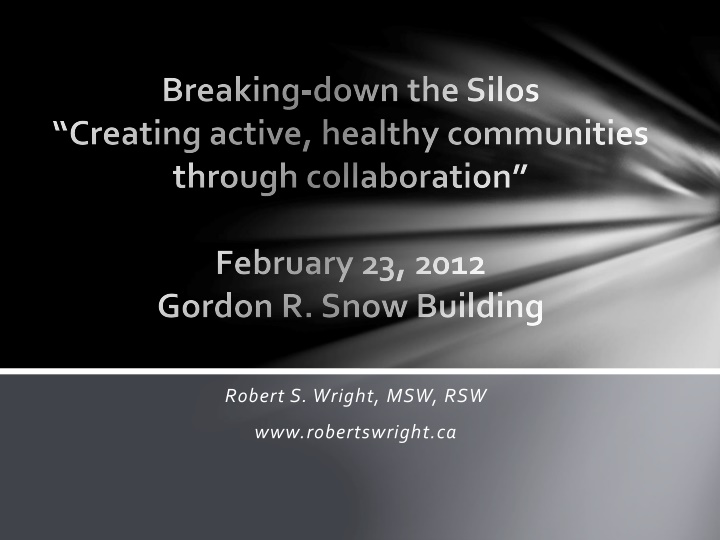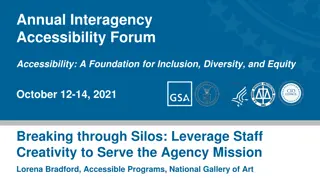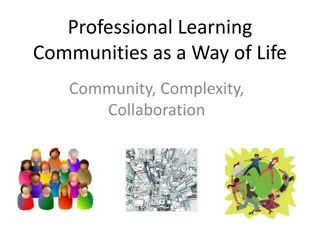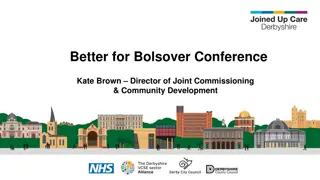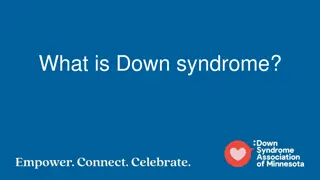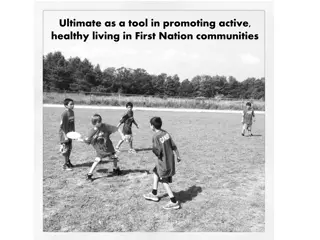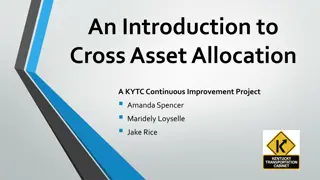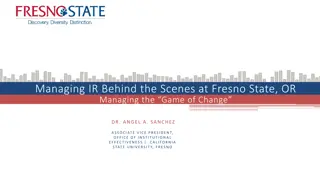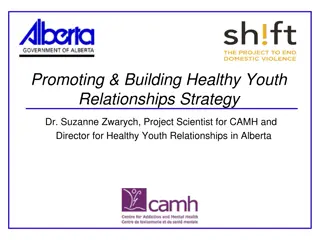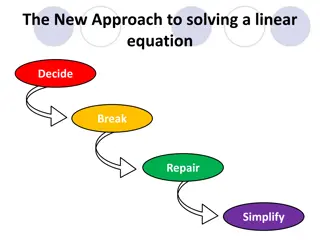Breaking Down Silos for Healthy Communities
Creating active, healthy communities through collaboration is essential in today's diverse society. This involves moving beyond cooperation and coordination towards true collaboration, where relationships are durable, authority is shared, and a common mission guides the work.
Download Presentation

Please find below an Image/Link to download the presentation.
The content on the website is provided AS IS for your information and personal use only. It may not be sold, licensed, or shared on other websites without obtaining consent from the author.If you encounter any issues during the download, it is possible that the publisher has removed the file from their server.
You are allowed to download the files provided on this website for personal or commercial use, subject to the condition that they are used lawfully. All files are the property of their respective owners.
The content on the website is provided AS IS for your information and personal use only. It may not be sold, licensed, or shared on other websites without obtaining consent from the author.
E N D
Presentation Transcript
Breaking-down the Silos Creating active, healthy communities through collaboration February 23, 2012 Gordon R. Snow Building Robert S. Wright, MSW, RSW www.robertswright.ca
Collaboration: Differential Definition Collaboration is a way of working together that exists at the far end of a continuum that includes: Cooperation Coordination Collaboration (The following work is adapted from Collaboration: What Makes it Work, 2nd Ed. )
Why Collaboration Since the 1970 s there has been recognition that society is increasingly diverse. Acknowledging this diversity, and the complexity that it brings to our understanding of social issues and social problems awakened us to the need for more complex responses.
Collaboration: Differential Definition Cooperation is characterized by informal relationships that exist without any commonly defined mission, structure or planning effort
Collaboration: Differential Definition Coordination is characterized by more formal relationships and an understanding of compatible missions. Though joint planning may be done, authority still rests with the individual units
Collaboration: Differential Definition Collaboration connotes a more durable and pervasive relationship. Participants are brought into new relationships which exercise authority independent of their separate functions. They work together under a common mission.
Cooperation: Like a Flock of Starlings
Coordination: Like a Flock of Geese
Collaboration: Something Slightly More Powerful
Collaboration: Six Essential Factors Conducive environment Prepared members Defined process and structure Functional communication Well articulated purpose Sufficient and skilled resources
The Environment Hx of Collaboration or Cooperation Group Seen as a Legitimate Leader Favourable Political and Social Climate Membership Mutual Respect, Understanding*, Trust Appropriate Cross Section of Members Collaboration Serves Self-interest Ability to Compromise Process and Structure Members own process and product Multi-layered participation Flexibility Clear Roles and Policies Adaptability Appropriate Pace of Development Communication Open and Frequent Communication* Informal Relationships and Communication Link Purpose Concrete, Attainable Goals and Objectives Shared Vision* Unique Purpose Resources Sufficient Funds, Staff, Materials and Time Skilled Leadership*
Collaboration: Six Essential Factors Conducive environment Prepared members Defined process and structure Functional communication Well articulated purpose Sufficient and skilled resources
Collaboration Leadership Must be Catalytic Innovation: Solutions to complex problems require collaboratively birthing new ideas, not simply debating and selecting amongst the old. Empowerment: The best solutions are created by accepting and aligning the offerings of all critical stakeholders and knowledge holders. Ownership: People give time, energy and commitment in proportion to their degree of ownership. Inclusion: Participation is the straightest road to ownership. (Taken from The Role of the Public Sector in Addressing Tough Community Problems. Jim Ellsworth, PSEPC)
Examples Cumberland County Collaborative When it works, it transforms communities Child and Youth Strategy Success in the face of major structural barriers
Breaking-down the Silos Creating active, healthy communities through collaboration February 23, 2012 Gordon R. Snow Building Robert S. Wright, MSW, RSW www.robertswright.ca
